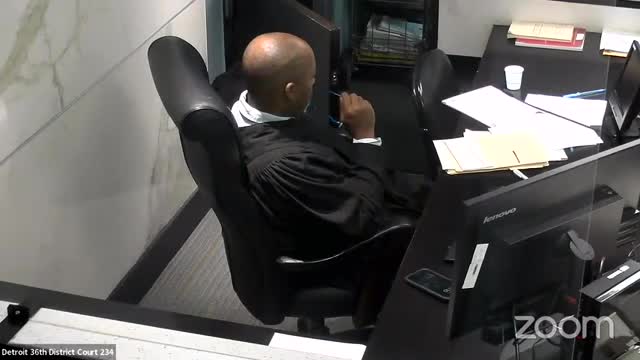Witness identifies suspect through Facebook photo during testimony
August 22, 2024 | CTRM 234 36th District Court, District Court Judges, Judicial, Texas
This article was created by AI summarizing key points discussed. AI makes mistakes, so for full details and context, please refer to the video of the full meeting. Please report any errors so we can fix them. Report an error »

In a recent court proceeding, a witness recounted the process of identifying a suspect in a criminal case through social media. The witness described how, after providing a detailed description of the suspect's facial features to a sketch artist, they received a text from their girlfriend prompting them to look at a picture on Facebook. The girlfriend believed the individual in the photo was involved in a crime.
Upon viewing the image, the witness immediately recognized the suspect's face. The photo was described as a split image featuring both the victim and the defendant, accompanied by a message urging the public to help remove the suspect from the streets due to serious allegations of violence against women.
During the testimony, the witness confirmed that the sketch artist had not yet completed the final draft of the sketch when they identified the suspect online. The court was presented with a photo, marked as proposed exhibit two, which the witness identified as a portion of the split image they had seen on Facebook. However, there was some contention regarding whether this photo was the exact image viewed by the witness, as it did not fully match the description of the original post.
The witness clarified that they did not know the identity of the Facebook account from which the image was taken and that no law enforcement agency had directed them to search for the suspect online. The proceedings highlighted the role of social media in modern criminal investigations, raising questions about the reliability of such evidence in court.
Upon viewing the image, the witness immediately recognized the suspect's face. The photo was described as a split image featuring both the victim and the defendant, accompanied by a message urging the public to help remove the suspect from the streets due to serious allegations of violence against women.
During the testimony, the witness confirmed that the sketch artist had not yet completed the final draft of the sketch when they identified the suspect online. The court was presented with a photo, marked as proposed exhibit two, which the witness identified as a portion of the split image they had seen on Facebook. However, there was some contention regarding whether this photo was the exact image viewed by the witness, as it did not fully match the description of the original post.
The witness clarified that they did not know the identity of the Facebook account from which the image was taken and that no law enforcement agency had directed them to search for the suspect online. The proceedings highlighted the role of social media in modern criminal investigations, raising questions about the reliability of such evidence in court.
View full meeting
This article is based on a recent meeting—watch the full video and explore the complete transcript for deeper insights into the discussion.
View full meeting
